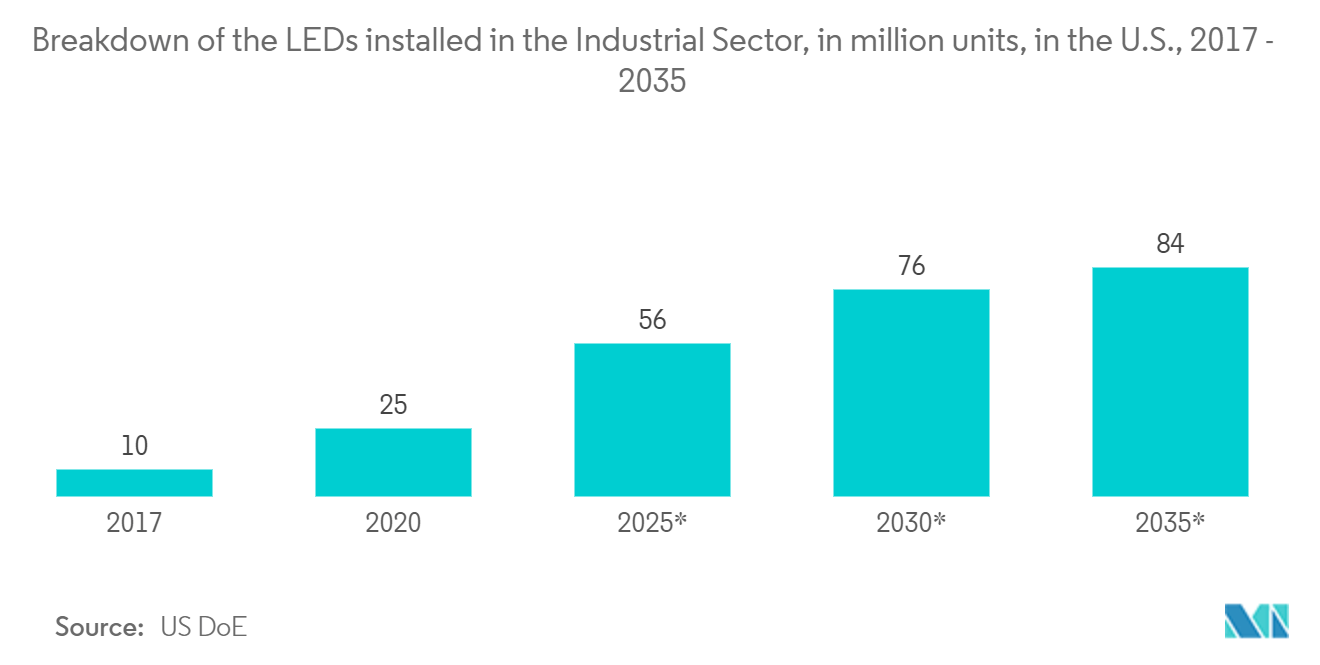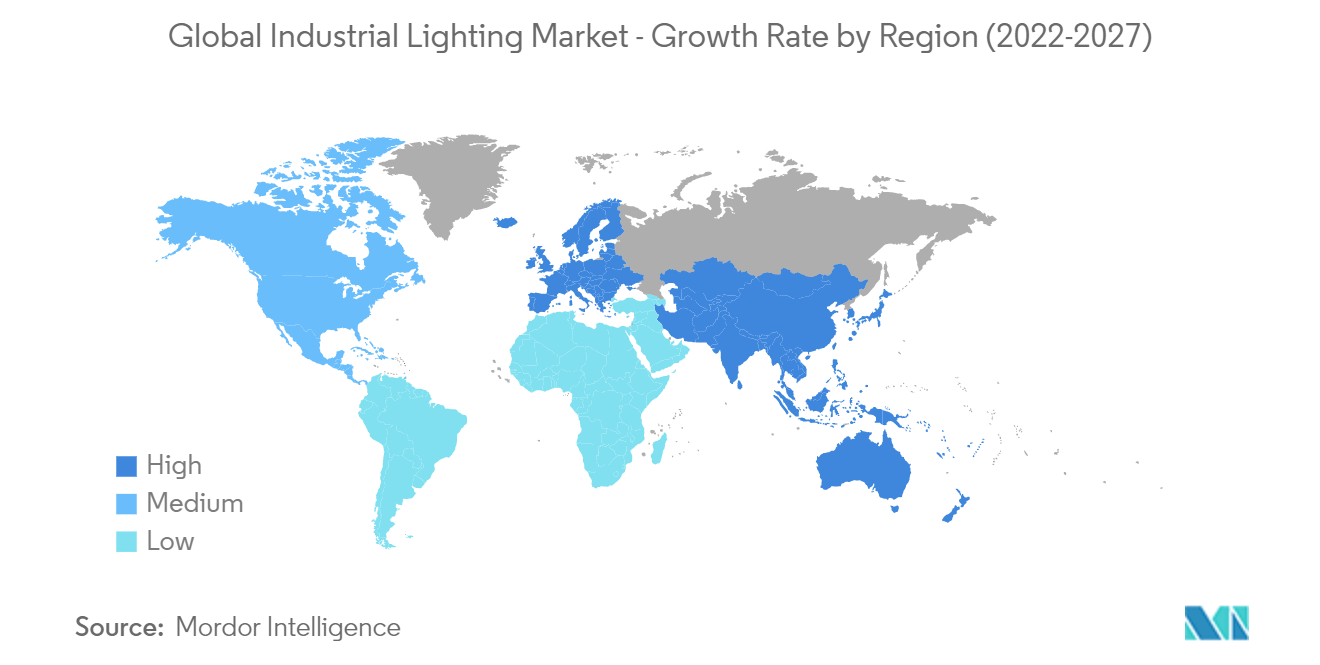Market Trends of Industrial Lighting Industry
This section covers the major market trends shaping the Industrial Lighting Market according to our research experts:
LED Light Source is Expected to Hold Major Share
- LEDs have features such as longevity, energy efficiency, low operational/maintenance costs, and the ability to deliver an increasingly shorter return on investment (ROI), which might ultimately drive their demand in the industrial lighting market. Moreover, LEDs do not produce any harmful ultraviolet or infrared radiation, thereby offering several benefits, such as lowered cooling costs, maintenance simplification, prolonged product life, and providing a margin of safety in an industrial environment.
- LEDs do not have any moving parts, are very durable, and can withstand shock and corrosion better. An added advantage is their inability to ignite with a spark. With such properties, LEDs are highly suitable for mining industry applications that are often subject to high vibrations, debris, chemicals, and explosive solutions.
- For instance, in August 2021, Dialight Group, a provider of industrial LED lighting solutions, launched its new ProSite LED floodlight range for the EMEA and APAC markets. The new floodlights were designed for industrial applications, providing superior visibility to external worksites with crisp, near-daylight illumination to ensure the safety and security of a diverse range of facilities, including mine sites.
- Many warehouses use linear fluorescent lamps or metal halide lamps for lighting. While fluorescents and metal halides are an improvement over incandescent bulbs, they still present issues like disposal hazards, shorter lifespan, and less efficient light when it comes to a direct comparison with LEDs. As such, these warehouses are now switching to LEDs.
- Governments and public organizations worldwide are increasingly deploying these LED Lighting networks to address the maintenance issues created by incandescent lamps' usage. These bulbs and high-pressure sodium are easily compounded due to the surrounding reactive gases. Besides, as a lighting source, LED also provides a high luminosity and high efficiency and offers operational solutions against corrosion and vapor resistance compared to traditional lighting.

Europe to Hold Significant Market Share
- LED modules have had a rapid uptake in the EU market. An important factor driving the demand for LED products in the region has been the European Union's policy measures banning the sale of inefficient lighting technologies. For instance, certain fluorescent and halogen light bulbs have been banned starting September 2021, as new Ecodesign and labeling rules came into force across the European Union.
- In August 2021, Signify introduced the first Philips LED A-class bulbs that meet the stringent EU Ecodesign and Energy labeling regulations. The New Philips LED A-class bulbs are expected to consume 60% less energy compared to standard Philips LED bulbs and have a longer lifespan.
- Further, many European countries, such as the United Kingdom, are aiming for net-zero carbon emissions by 2050. Therefore, local manufacturing companies are investing considerably in lighting innovations based on this agenda.
- The unprecedented rise in wholesale gas and electricity prices has put a strain on many sectors across Europe. For instance, wholesale gas prices in Europe rose to record levels in Q3 2021, reaching 85 EUR/MWh by the end of September, a level rarely seen in European hubs, according to the European Commission. As such, companies are under increasing pressure to cut costs across manufacturing, warehousing, and logistics, which are the major users of natural gas and electricity.
- According to Yü Energy, in the warehousing and logistics industry, lighting uses most of the energy (typically around 65%). Energy efficiency in this sector is particularly important owing to the rapid expansion in warehousing capacity in recent years across the region. For instance, as per ONS, new orders for the building of warehouses in the United Kingdom were worth GBP 5.6 billion (USD 6.75 billion) in 2021, which is more than in any year since 1985. As such, there is significant demand for energy-efficient lighting solutions from this segment.

